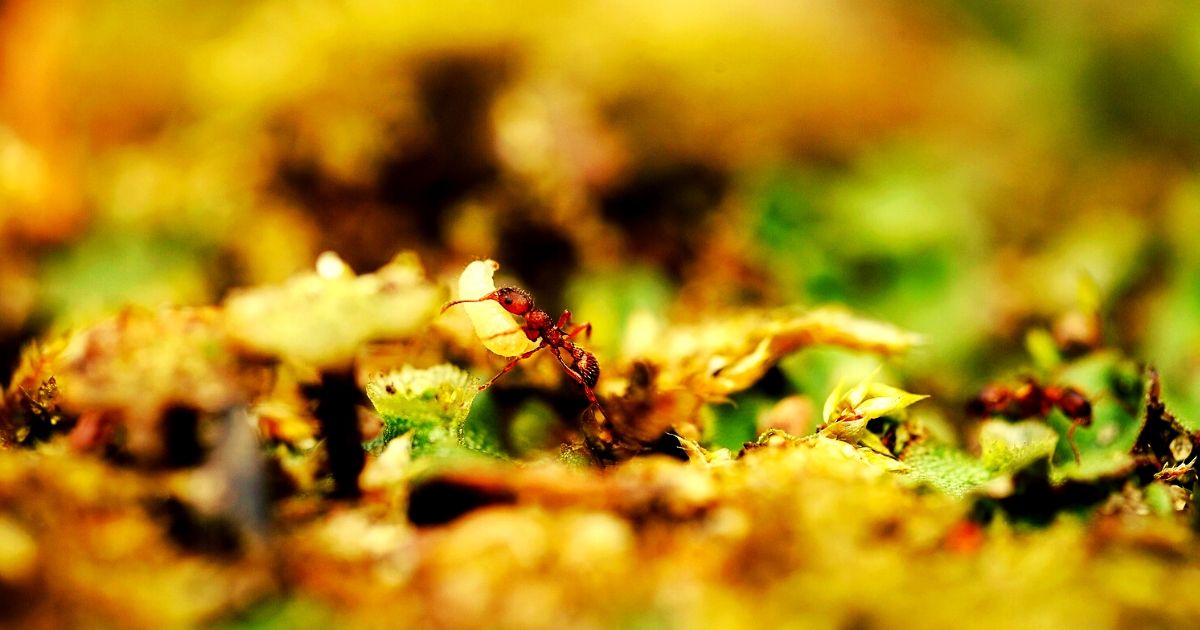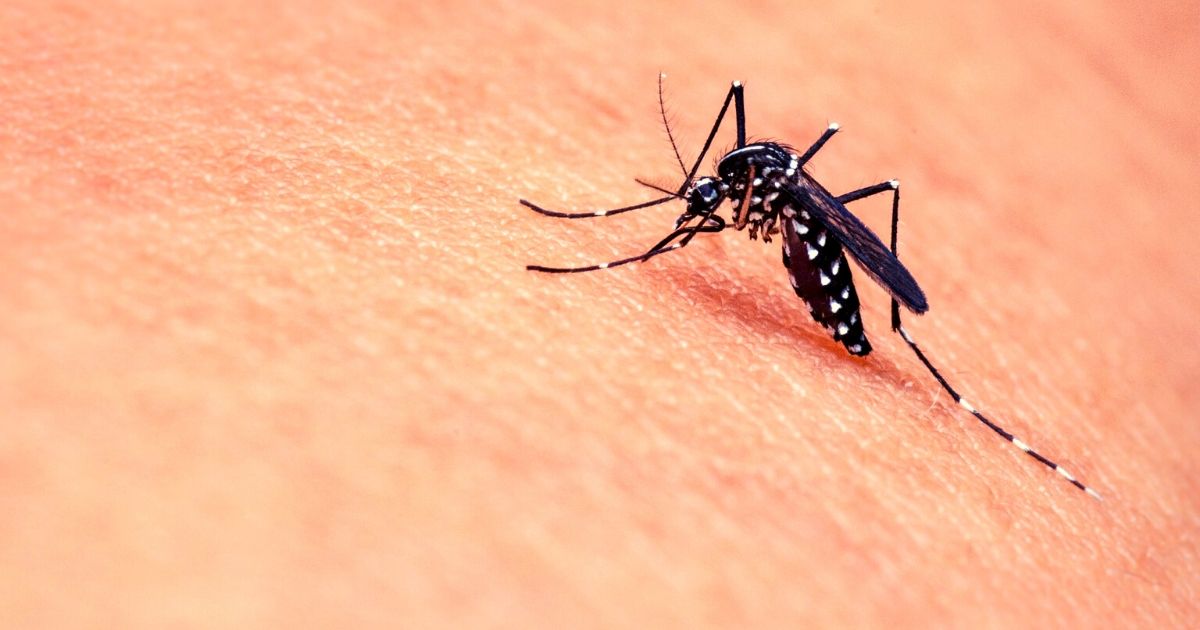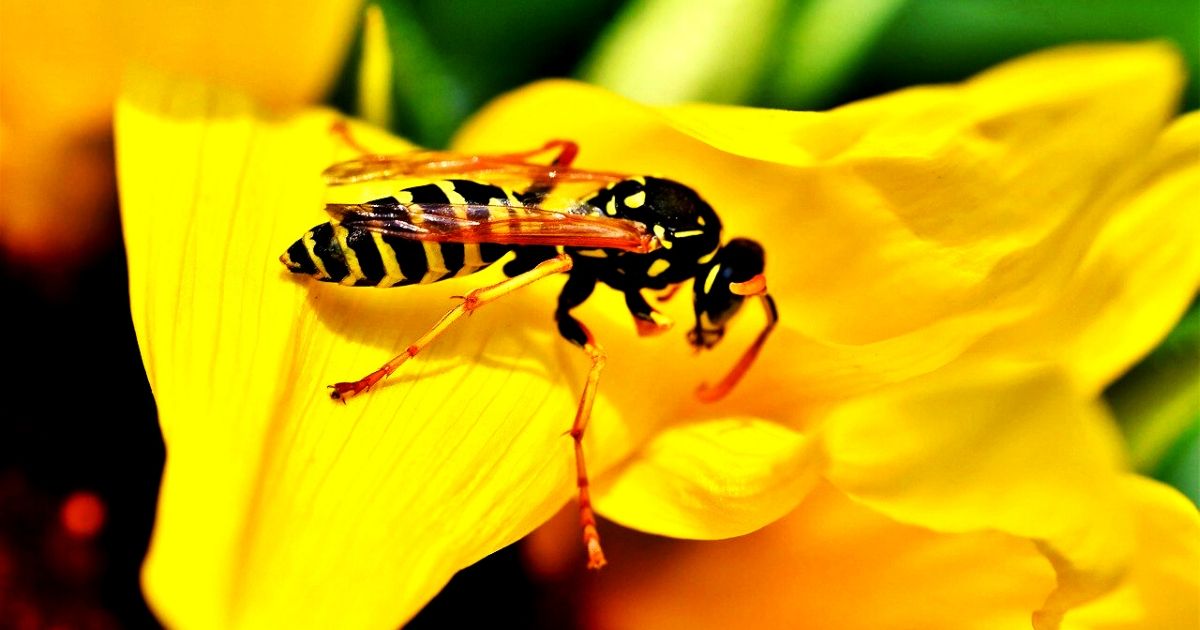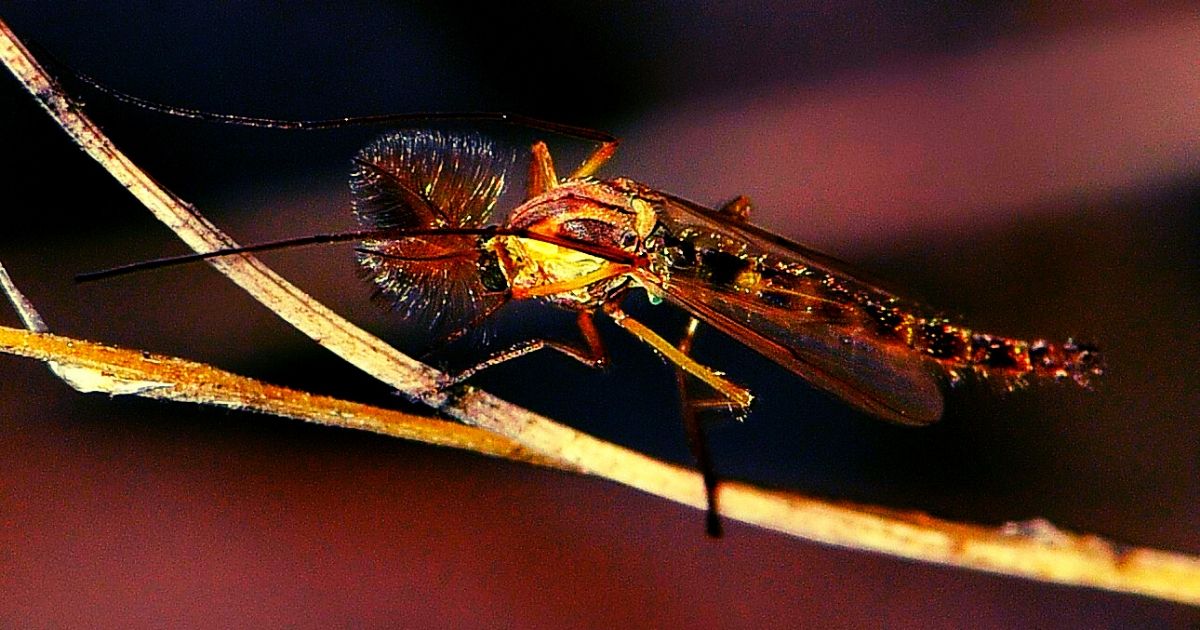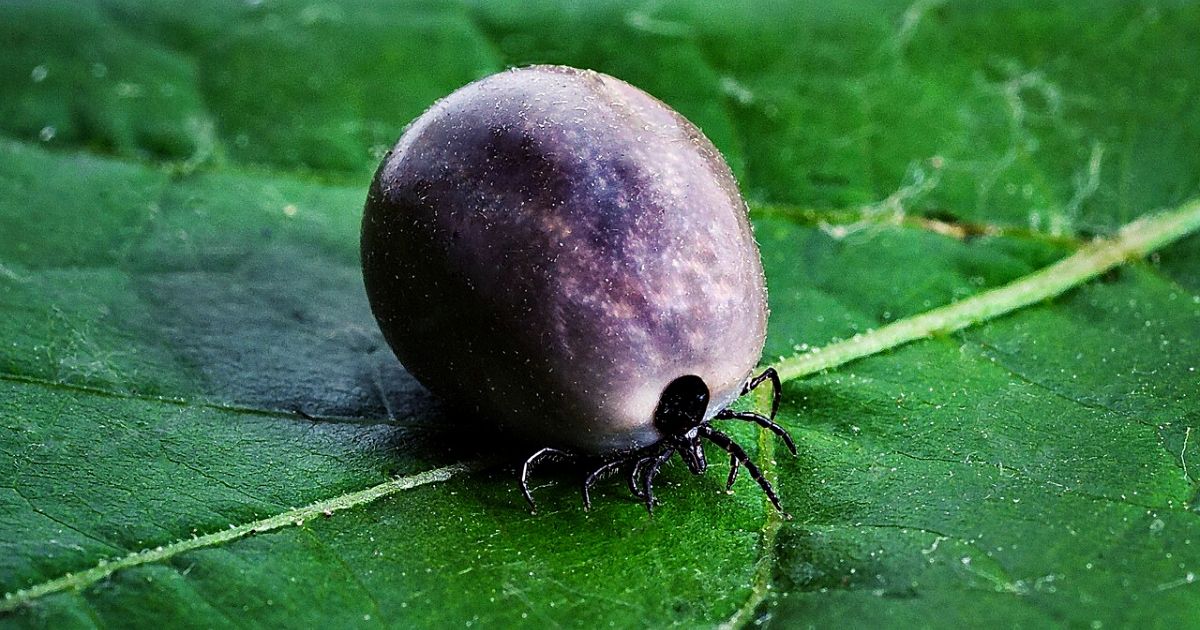The Ultimate Guide to Bed Bugs Prevention and Treatment in Singapore
Pest Guides
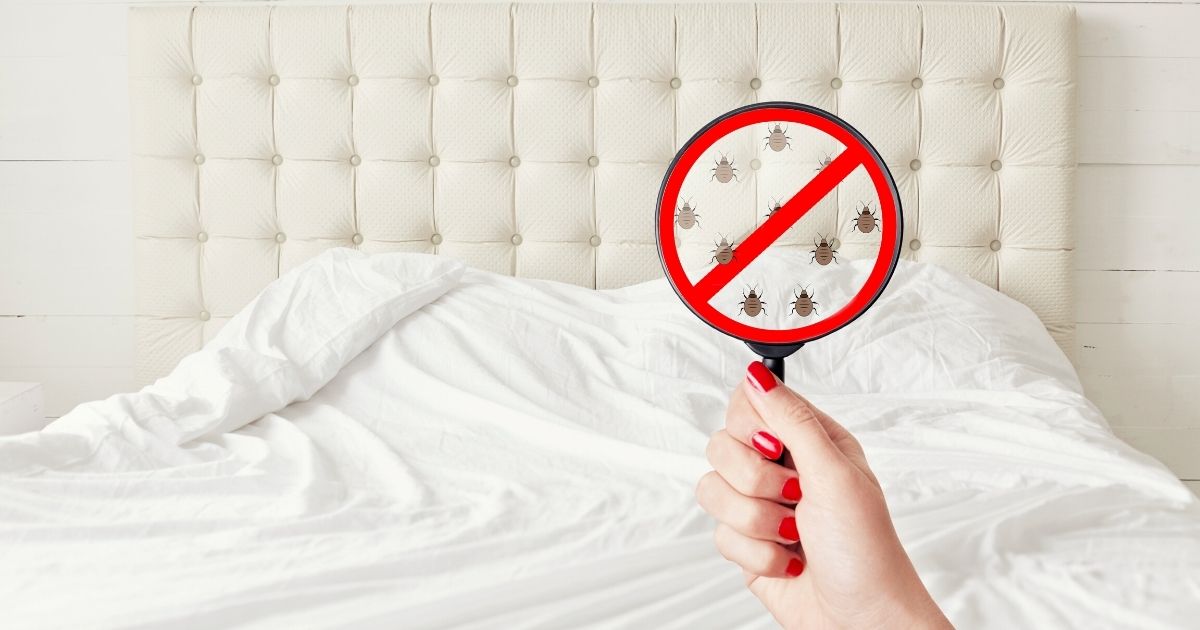
Table Of Contents
- What You Need to Know About Bed Bugs
- Types of Bed Bugs in Singapore
- Life Cycle and Biology
- Hazards
- Signs of a Bed Bug Infestation
- What to Do When You Have a Bed Bug Infestation
- Tips to Prevent and Get Rid of Bed Bugs
- DIY Methods to Prevent and Get Rid of Bed Bugs
- Bed Bug Home Remedies
- How to Get Rid of Bed Bug Bite Marks
- Professional Bed Bug Treatment
Have you been getting unbearably itchy bed bugs bites causing sleepless nights? Or have you been noticing skin rashes that pop up from nowhere when you wake up every morning? If the answer is yes, then you might be facing a bed bug infestation.
You might be wondering what the source of a bed bug infestation is? And where do the bugs come from? The answer may surprise you. In the past, bed bugs have been associated with poor living conditions but their infestations have spread like wildfire in cities around the globe. This phenomenon is contributed by the shift in pesticide usage globalisation. The thriving travel and tourism industry further promotes and increases the rate at which bed bugs are spread all over the world.
Humans bring in bed bug infestations, so we need to take some responsibility. Someone may pick up bed bugs from a hotel room, theatre, a plane or even from public transport. They climb onto your clothes or sneak into your luggage bags. Eventually, the beg bugs find a way into your home.
A bed bug infestation may be a headache to a lot of people. However, with some understanding, you can prevent or get rid of bed bugs infestations.
What You Need to Know About Bed Bugs
Bed bugs are some of the most difficult pests to remove once they have taken hold in your home. Unlike other pests like mosquitoes or rodents, bed bugs do not actually spread disease. However, they are a very big nuisance because bits from bed bugs cause itching, which can lead to excessive scratching and thereby skin infection.
Being bitten by beg bugs at night also causes a loss of sleep.
They can get into the linen on the beds, which is how they got their name. However, you should not be fooled into believing that they only infest beds. They can also get into the carpets, curtains, and even clothing.
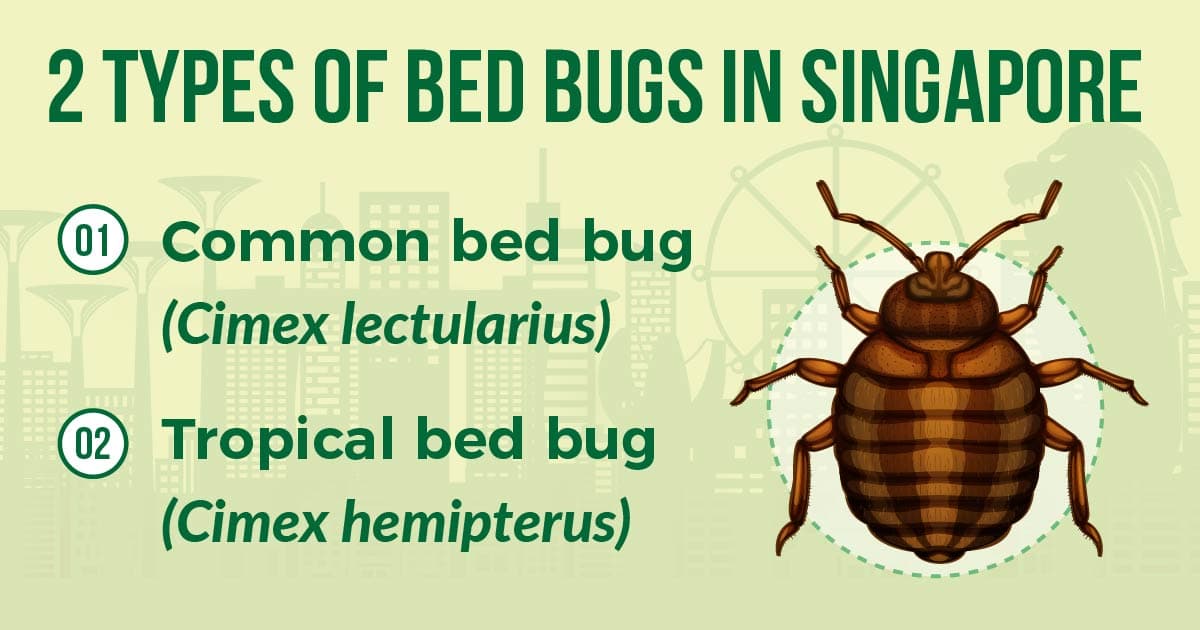
Types of Bed Bugs in Singapore
There are two commonly found species of bed bugs in Singapore:
- Common bed bug (Cimex lectularius)
- Tropical bed bug (Cimex Hemipterus)
Cimex lectularius has a worldwide distribution, especially in temperate regions. Cimex Hemipterus is a common species found in tropical and subtropical areas including Singapore. Both species feed on human blood and are important pests to the travel and hospitality industries.
What Do Bed Bugs Look Like?
- Oval-shaped body
- Reddish-brown colour
Bed bugs have a brownish color before they have fed. After feeding, on the blood of animals and people, they turn a red color. The baby bed bugs are very difficult to see, as they do not have much color to them at all.
These six-legged creatures can reach up to a quarter of an inch long when they are adults.
Life Cycle and Biology
A female bed bug can lay 200 to 250 eggs in her lifetime (one to five eggs each day) and the eggs hatch in 6 to 10 days – this is how they can spread and infest an area so quickly. The life cycle of a bed bug can be completed in as little as three weeks. They will mature in about 21 days, and they can live for several months without feeding.
Bed bug larva undergoes incomplete metamorphosis. It takes five stages before a larva matures into an adult bed bug. A blood meal is needed each time before a nymph moults into the next stage. Bed bugs are opportunistic feeders. They consume as much blood as possible from you until they are fully engorged.
A tropical bed bug can live for up to 100 days while a common bed bug can live for up to 1 year. As much as they need blood meals for growth, bed bugs were found to be able to survive a long period without blood meals.
Have you ever wondered how a tiny bed bug can find its way to you? Bed bugs are attracted to the carbon dioxide and body heat given off by human bodies. A higher concentration of carbon dioxide due to human presence stimulates bed bugs to feed. As they approach the human host, they are attracted by the body heat of the host.

Hazards
Unlike many other pests, bed bugs do not transmit diseases to humans nor cause structural damage to buildings. However, bed bugs feed on human blood. Their presence can still have severe impacts on humans.
1. Allergic reactions
Bed bug bites are not harmful to humans. Some people do not even develop reactions toward the bites. However, people that develop allergic reactions to bed bug bites may have painful swelling or intense itching around the bites. In this scenario, medical attention will be needed to ease the symptoms of allergy.
2. Effect on mental health
Bed bug bites can be extremely itchy to some people. The itch from the bites can cause insomnia and even anxiety in cases of heavy infestations. Bed bugs may cause an affected individual to have sleepless nights, and the lack of sleep can further affect mental health and the ability to carry out normal daily activities.
3. Property damage
Bed bugs do not cause structural damage like termites and rats, but they can cause cosmetic damage to the property. In a heavily infested unit, blood speckles and the droppings of bed bugs can be found all over the unit including the mattresses, bed frames and walls. Owners need to replace the items if the stains are not removable. Also, repainting the walls can be costly.
4. Economic and reputation damage
Bed bugs are a serious threat to the hospitality industry as well as the transport industry. Hotels suffer a loss when the bed bug infestation decreases their capacity to accept guests. The cost to treat bed bug infestations is usually a significant amount that can badly affect a company.
Besides hotel rooms, bed bugs can also be found on planes, buses and trains, causing significant losses to the businesses. A business’s reputation can be badly affected by bed bugs. Numerous lawsuits may also come from bed bug infestations.
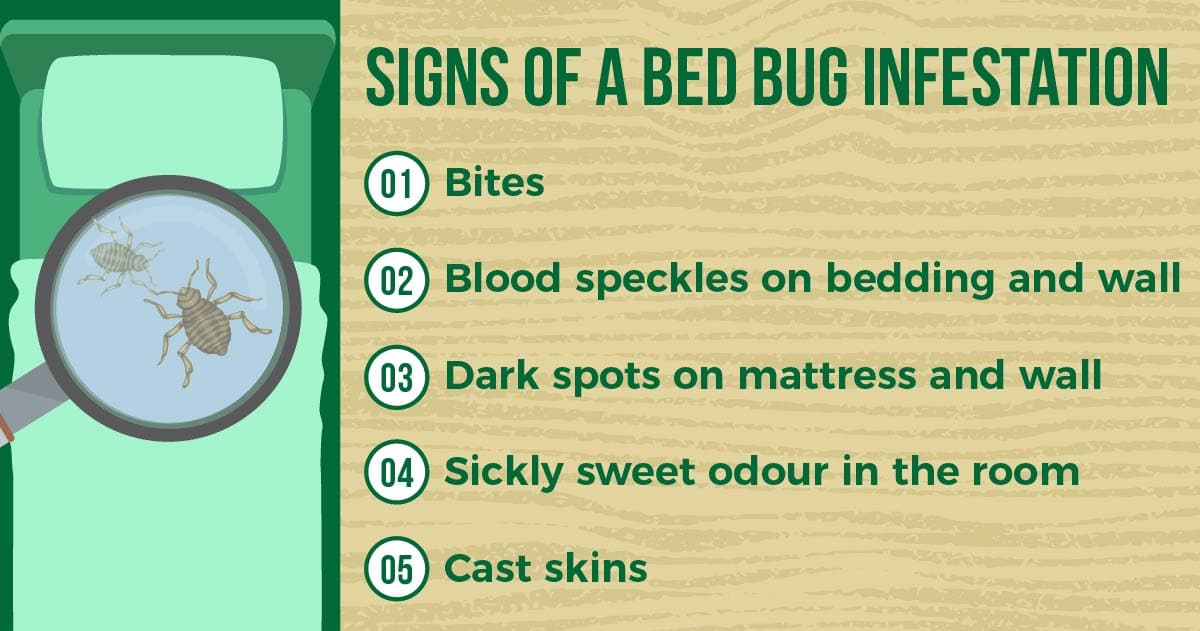
Signs of a Bed Bug Infestation
Here are some signs that tell you that you have a bed bug infestation.
1. Bites
One of the most apparent signs that indicate a bed bug infestation is the presence of bite signs. It might be difficult to differentiate between the bites caused by bed bugs and other insects such as mosquitoes.
A bed bug usually bites more than once, so it is likely to leave numerous bites that cluster around several exposed parts of the body such as the face, neck, arms and legs.
2. Blood speckles on bedding and wall
Bed bugs hide in the corners and edges of a mattress, as well as other locations with cracks and crevices, including the wall. During the night, as bed bugs leave their hiding place to forage, you might accidentally crush them during your sleep. Crushing them causes their bodies to rupture, leaving behind blood stains on the mattress or wall.
3. Dark spots on mattress and wall
The droppings of bed bugs consist of digested blood which resembles black pepper flakes. They are commonly found near the hiding sites of the bed bugs so be sure to check the corners and edges of your mattresses and bed frames if you suspect a bed bug infestation.
4. Sickly sweet odour in the room
In places heavily infested with bed bugs, a pungent smell can be detected. People can have a different perception of how the odour smells. The odour is caused by the pheromones released by the bed bugs. Thus, the odour intensifies as the number of bed bugs present increases.
5. Cast skins of bed bugs
As mentioned earlier, bed bugs need to moult (cast off their skin) to grow. The sighting of cast skins (also known as exoskeletons) indicates the presence of bed bug infestations. The sightings of live bed bugs are also possible.
6. Visible presence of bed bugs
You may even see the adults, even though they typically come out to feed on blood at night. Their presence during daylight hours often indicates a substantial population, as bed bugs usually prefer to remain concealed in darkness when not actively feeding. Therefore, if you spot adult bed bugs during the day you may need to take immediate actions to prevent the infestation from growing further.
Want to find out more about bed bugs removal in Singapore?
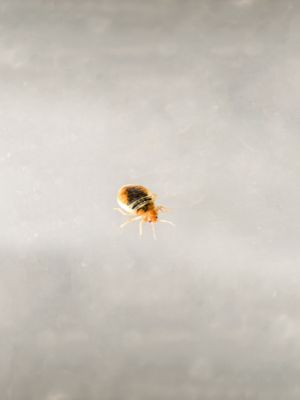
What to Do When You Have a Bed Bug Infestation
Getting rid of bed bugs by yourself can result in many failed attempts. It is extremely difficult to do, and you would be much better served by having professionals in Singapore come in with the right equipment to take care of things.
There are several proven methods that can be used for treating an infestation and getting rid of bed bugs.
Spray and Gas Treatment
A very popular and effective option is to use spray and gas treatment. This utilises dual spraying action, and it makes it possible to cover a large area in a short period. It can eliminate the bed bugs, as well as the eggs they have already laid.
Steaming
Another option is steaming. One of the benefits of this method is that the steaming can occur even if there are people and pets in the home at the time. This makes it a fast and efficient option, and it also happens to be environmentally friendly.
If you have signs of a bed bug infestation, do not wait to get the help you need. Get effective and professional bed bug control from Killem as we can take care of the problem right away.
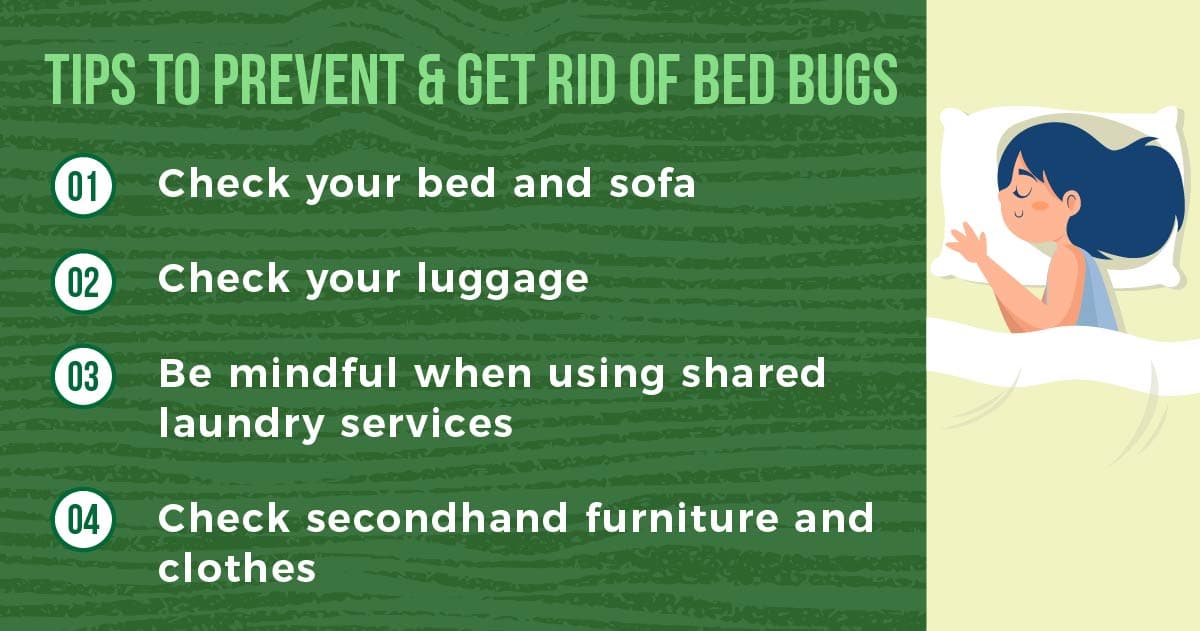
Tips to Prevent and Get Rid of Bed Bugs
Bed bug infestation is a growing concern around the world. If you have them, it is important to know how to get rid of bed bugs. It should be taken seriously as it can cause stress to the victims even though bed bugs do not transmit diseases. Since prevention is better than cure, being mindful in daily life can help to prevent a bed bugs infestation and keep them away from you.
1. Check your bed and sofa
While bed bugs are mostly found around your bed, they can hide around other locations such as the sofa too.
Bed bugs can bite you without you noticing them. They do so when you are sound asleep, or even when you are sitting on the sofa enjoying your favorite movie. Check the gaps between cushions as well as the seams and zippers of the cushion covers to look for signs of bed bug infestation. Bed bugs can also infest the gaps between cushions as well as the frames of beds and sofas.
If you see black spots at the corners and edges of the cushions or mattresses, you probably have bed bugs lurking around you.
Inspecting the beds and sofas helps to detect bed bug infestations. This allows early action before the infestations worsen.
2. Check your luggage
Another major source of bed bug infestation is infested accommodation. As you are enjoying your vacation in resorts or hotels, bed bugs from an infested room may climb into your luggage and follow you back home. Inspect your luggage as you are unpacking them may help you prevent a bed bug infestation.
3. Be mindful when using shared laundry services
Launderettes and shared laundry services are convenient for people living far from home or people who do not do their laundry at home. However, the convenience does come with a risk of exposing yourself to bed bug infestations. Bed bugs may hide in the shared equipment, so do check your washed clothes for signs of bed bugs after using shared laundry services.
4. Check secondhand furniture and clothes
Buying pre-loved items are a great way to save costs and care for the environment. However, sometimes you are getting more than what you wish for as bed bugs may hide in items such as furniture, clothing and even stuffed toys.
Bed bugs can survive without a blood meal for up to 4 months, so they can even be found in items that have been left unattended. Make sure you check the items before you use them again to prevent bed bug infestations at home.
5. Seek Help From a Professional
Professional pest control managers are the best people you can look for to manage the bed bug infestation at your house. Professional pest control operators will conduct effective treatment after careful inspection.
Conventional treatment methods for bed bug infestations include gassing and residual spraying method. Gassing delivers fast knockdown to the bed bugs and residual spraying chemical kills bed bugs that come into contact with the chemical after the treatment. This is important as the eggs of the bed bugs can usually survive the treatment so the residual effect of the chemical kills the newly-hatched bed bugs.
DIY Methods to Prevent and Get Rid of Bed Bugs
Getting rid of bed bugs on your own is not an easy task. However, some methods can reduce their presence or even remove them entirely in cases of light infestations.
1. Wash and dry in high temperature
Bed bugs can be killed when exposed to temperatures higher than 60°C for 15 minutes. Washing or drying your mattress linen and clothes at high temperatures is one of the most effective ways to kill bed bugs. High temperatures have been known to kill bed bugs effectively, therefore steamers that produce high-temperature dry steam are used by professional pest control service providers as a greener and safer approach to eliminate bed bugs.
2. Vacuuming
Vacuuming can remove the adult bed bugs, the nymphs and even the eggs. Focus on the potential hiding spots of bed bugs such as wall joints, cracks and crevices. Thoroughly vacuum the bed, including mattresses and bed frames to remove bed bugs.
Vacuuming together with washing linens at high temperatures may help to eliminate the bed bugs. However, if the situation does not improve, professional pest treatment is required to help solve your problem.
3. Use bedbug-proof encasements for your matresses
Bed bug-proof encasements restrict the movements of bed bugs, thus preventing new infestations as well as trapping existing bed bugs. They are available in the market and work well to keep bed bugs off your bed as long as you install them correctly. With them, you will be able to sleep soundly without having to worry about bed bug bites.
Pro Tip: Don’t panic and don't throw out all of your belongings because most of them can be treated and saved.
Bed Bug Home Remedies
Let’s look at some natural remedies for dealing with bed bugs. A common bed bug home remedy is essential oil bed bug spray. Commonly used oils for creating a natural bed bug killer spray are:
- Peppermint
- Thyme
- Clove
The bed bug home remedy not only effectively eliminates bed bugs, it also provides additional protection to various sensitive spots around your home. This includes bedding, carpets, fabrics of all kinds and any furniture.
To use the bed bug spray, all you need is a spray bottle with distilled water and 10-20 drops of essential oils. Spray it on all prone areas and reapply 2-3 days later. This bed bug home remedy is an effective and natural way to get rid of bed bugs without the use of chemicals.
Other natural products to help get rid of bed bugs include:
- Tea tree oil
- Lavender oil
- Cinnamon
- Powdered Pepper
- Lemon
- Peppermint
- Neem oil

How to Get Rid of Bed Bug Bite Marks
Bed bug bite marks can be an annoying reminder of a bed bug infestation. It is important to resist the urge to scratch when treating bed bug bite marks, as it can lead to secondary infections or prolonged marks.
Some other steps involved in bed bug bite marks treatment and removal include:
- Cleaning the affected area with mild soap and water to prevent any potential infections.
- Using natural remedies like aloe vera or tea tree oil to soothe the skin and reduce inflammation.
- Using creams containing hydrocortisone or antihistamines to reduce itching and help in the healing process.
- For more severe cases, consulting a dermatologist is recommended
Remember, consistent care and patience are key in gradually fading and removing the bed bug marks.

Pest Problem? Let Us Help.
We offer fast and effective precision treatments to eliminate pests while ensuring a safe environment for your home or business.
Professional Bed Bug Treatment
Residual insecticidal treatment is one of the treatment methods to get rid of bed bugs. The chemicals and products used by pest management professionals are different from those that are available over the counter (less effective). The application of residual insecticides targets the areas where bed bugs are most likely to hide and reside, such as:
- Seams of beds
- Folds of sofas
- Wall crevices
Pro tip: Bed bugs are best to be treated before they become much more severe problem.
Killem Pest has employed steaming treatment as an alternative solution for bed bug control.
It is an environmentally friendly solution as it resolves and eliminates bed bugs and their eggs without the use of any insecticide.
The superheated dry steam from the specially designed appliance can be steamed up to 180°C, which directly kills the bed bugs and eggs upon contact. The steam generated will not cause damage to any surface or fabric. Instead, it can help to eradicate viruses, bacteria, germs and fungi on the treated surface.
Bed bug problems should not be underestimated. They are best solved before they become much more severe. In the case of a serious bed bug infestation, treatment methods may vary and can become more challenging. It is vital to identify the root cause of bed bug problems, recognize the source to avoid continuously bringing them back from outside. Lastly, help from a professional pest control company is strongly advised.
Frequently Asked Questions
Bed bugs can come from various infested areas or surfaces, or used furniture. They can often be found in many forms of transportation or any public places and can travel with you from lounge areas, airports or airplanes.
Typically bed bugs hide in mattresses or couches, in the cracks in the bed frame, or near the bed. You can also find bed bugs in other furniture or on the walls (wallpapers, pictures, curtains, window frames, etc).
It is hard to get rid of bed bugs as they hide well and reproduce quickly: their number can grow exponentially in a couple of days.
Bed bugs are visible to the naked eye: adult bed bugs’ colour ranges from red to dark, they are oval in shape and look similar to the apple seed. Immature bed bugs are smaller in size and translucent whitish-yellow in color.
No, bed bugs cannot fly. They don’t have wings, so they can only crawl around. However, they are quite good at crawling and can move quickly over floors, walls, and ceilings to find their next meal.
To spot the presence of bed bugs, check for the bites on your skin, reddish stains or dark spots on bed sheets or mattresses, or the presence of live or dead bugs and their eggs.
Bed bug bites appear on the parts of your skin that are not covered during the night, and look similar to mosquito bites – swollen red spots that often itch.
Related Posts
Nothing found.
The Ultimate Guide to Ant Prevention and Treatment in Singapore
Have you ever walked into the kitchen only to find ants feasting on the cakes that you forgot to place in the fridge? Or did you find the carcasses of ants in the drinks that you were just about to finish? These scenarios are familiar to most of us. The presence of ants may be a sign of a larger ant infestation. Ant infestations are relatively harmless in most cases. Severe ant infestations may cause problems and badly affect the quality of life.
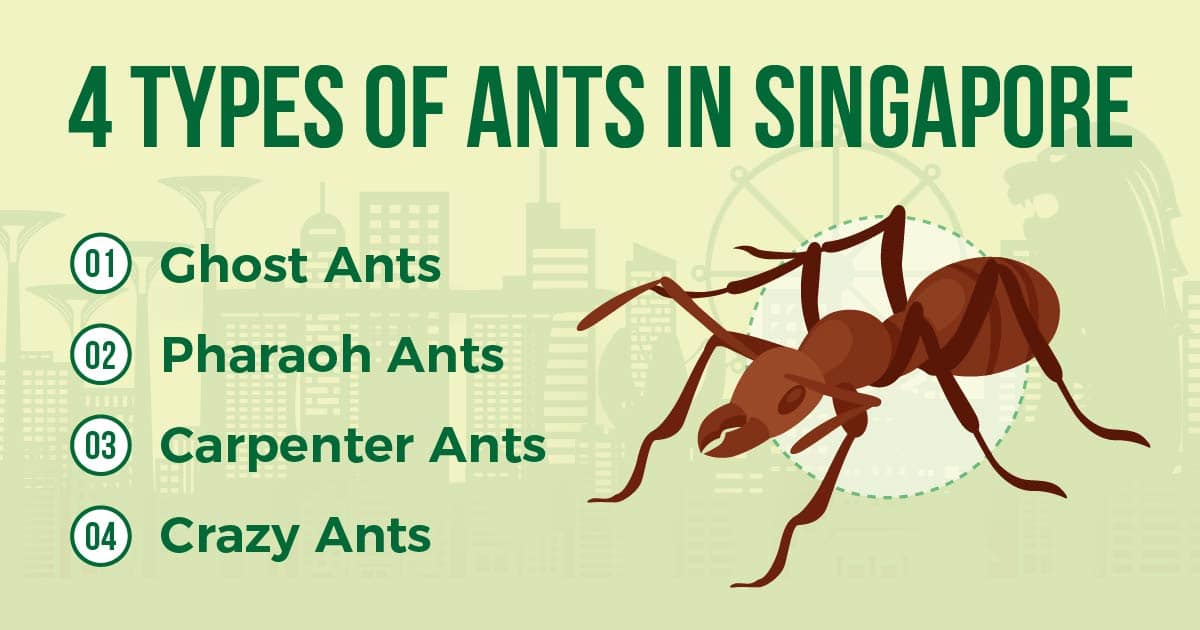
Types of Ants in Singapore
Some of the most commonly found ants in Singapore are:
These ants may enter homes searching for food and shelter. Buildings appeal to ants since they offer protection from weather and predators.
Ghost ants
Ghost ants – also known as sugar ants – love moist environments. They are usually active in kitchens. For example, inside cabinets, under the sink or behind the fridge.
Characteristics of ghost ants:
- 1.3 to 1.5mm big
- Dark heads
- Translucent bodies
- They love sweet and sugar-rich foods as they contain carbs to feed the colonies
Pharaoh ants
Pharaoh ants are a real nuisance. They can be hard to handle. Pharaoh ants are relatively resistant to pesticides. If you spray pesticides, their colony will break and move into new territories. This makes it challenging to eliminate pharaoh ants. Also, pharaoh ants tend to bite when threatened.
The characteristics of pharaoh ants include:
- 2mm big
- Distinctive golden or brown colour
- They enjoy oily and protein-rich foods
- Queens can live anywhere from 4 to 12 years
Pro tip: It is important to identify the type of ant infestation to choose the right method to treat ants.
Carpenter ants
Carpenter ants, as their name implies, live in wooden structures. Though they do not eat wood, they will create an area for their colony with their mouths. Hence, carpenter ants are sometimes thought to be termites.
Characteristics of carpenter ants:
- 15 to 17mm big
- Black and reddish-brown
- They love eating honeydew and dead insects
- Often found in moist-rich areas such as bathrooms
Crazy ants
Last on this list is the crazy ants. Their name relates to their defence techniques. Once disturbed, crazy ants will swiftly move in all directions. This makes it challenging to eliminate them.
Characteristics of crazy ants:
- 2 to 3mm big
- Long legs
- Black or dark red colour
- Antennae
- They love sugary foods (hence they will occupy similar places as ghost ants)
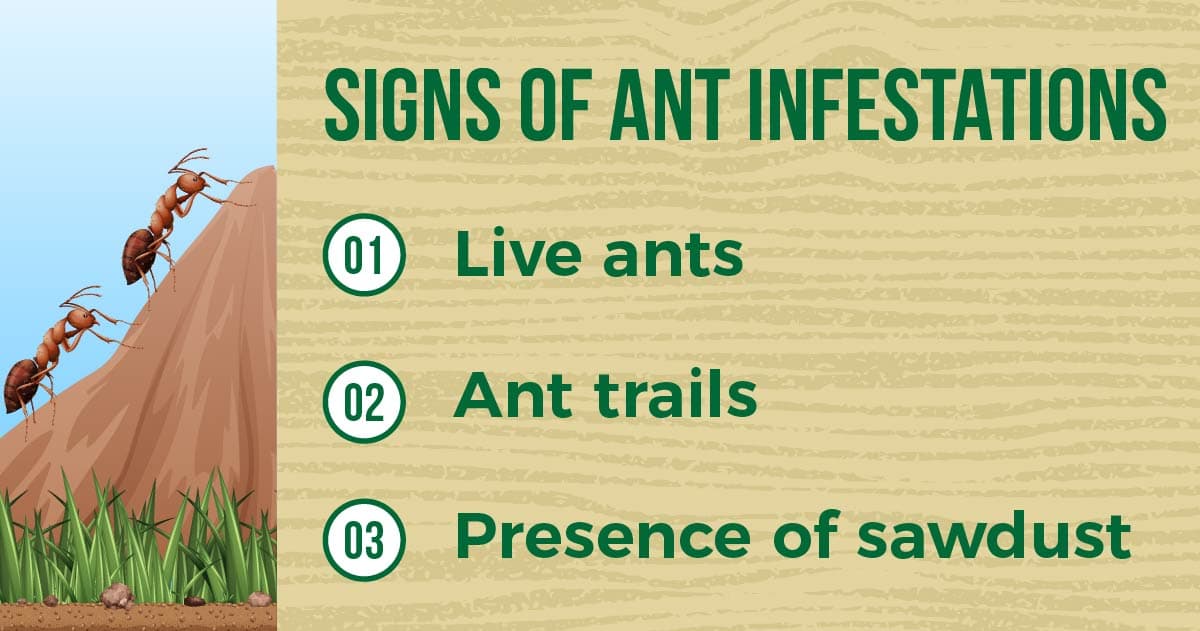
Signs of an Ant Infestation
Ants from the external surroundings may enter your house occasionally as they forage for food. Thus, you should not have to worry when you see one or two ants in the house. However, there are some tell-tale signs indicating that you might be having an ant infestation around your home.
1. Live ants
One of the most apparent signs indicating an ant infestation is the sightings of a large number of live ants. They are usually present around food and food preparation areas as they forage for food.
2. Ant trails
Ants leave a trail of pheromone as they forage. This allows other members of the colony can follow. An ant trail forms as ants travel on the same path with the pheromone. Following the ant trail may lead you to their nest.
3. Presence of sawdust
The presence of sawdust may indicate the presence of carpenter ants. Carpenter ants do not consume the wood that they infest. Instead, they expel the wood from the tunnels they make, leaving behind piles or trails of sawdust.
Want to find out more about ant control in Singapore?

Life Cycle and Biology
Similar to insects like mosquitoes and butterflies, ants undergo a complete metamorphosis. Their life stages consist of:
- Eggs
- Larvae
- Pupae
- Adulthood
Ants are also social insects that practice a caste system. Thus, the normal function of a colony is maintained through the division of labour by different castes. An ant colony consists of a queen, alates, workers, pupae, larvae and eggs.
Reproducing
The queen is the largest individual in a colony. Her primary function is to reproduce and grow the colony. The queen only mates once but continues to reproduce throughout its entire lifespan.
A male’s sole function is to mate, and it dies after its task is accomplished.
The alates are the winged individuals that fly off to form new colonies. New colonies can also be created through a process known as budding, whereby the queen ant leaves the nest to start a new colony in another location.
Workers
The worker is the most common caste which encompasses the ants that we see in the surrounding. The tasks of the workers include:
- Foraging for food
- Feeding the workers
- Guarding and tending to the nest
Some species of ants have workers that are dimorphic. This means that the workers are further classified into:
- Major workers: larger
- Minor workers: smaller
The larvae are fragile and legless, so they need nursing from the workers.
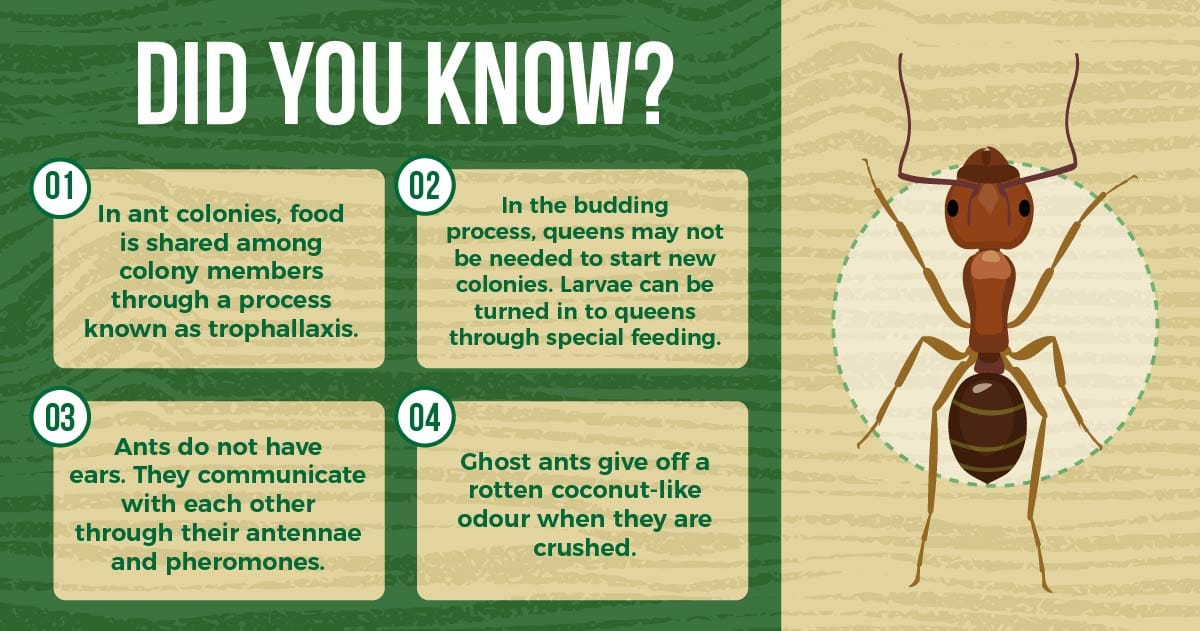
Hazards
Ants are not important vectors of diseases, so they pose little medical concerns. However, the presence of ants still poses risks to homeowners.
1. Nuisance
The sight of ants around your house may be unpleasant. Ants are an eyesore to people who hate insects. They may also climb onto your body unnoticed and cause irritation.
2. Structural damage
Severe infestation by carpenter ants may hollow out wooden structures, causing the structures to weaken. In turn, this increases the risk of collapsing.
3. Occurrence of other pests
The presence of ants may cause other entomophagous pests such as spiders and geckos to thrive. Ants serve as a food source for these pests. Thus, the increase in the food supply would undoubtedly benefit their predators.
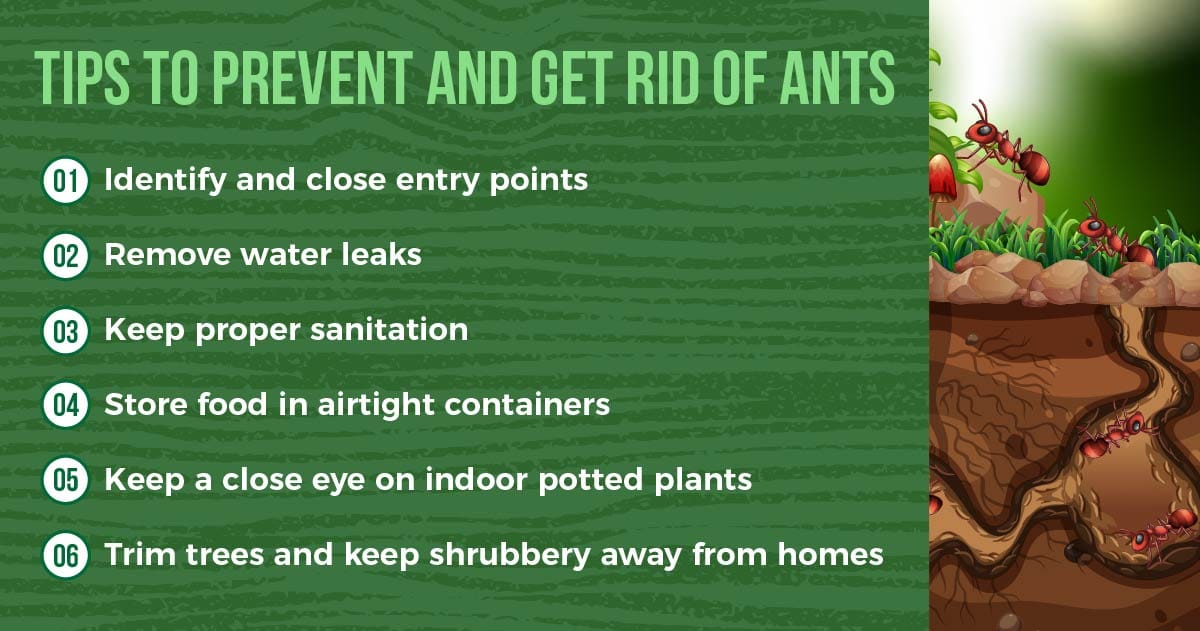
Tips to Prevent and Get Rid of Ants
6 ways to prevent and get rid of ants in Singapore:
1. Identify and close entry points
How do ants find their way into your home? Understanding this will allow you to block ants from entering. Usually, ants enter through cracks in the walls, floors, ceilings, windows and pipelines. Even the tiniest of spaces is enough for ants to enter. Prevention is key, thus your first task is to find and seal all possible entry points.
2. Remove water leaks
Water is one of the sources that ants thrive on. Ants also nest in moist areas. Therefore, water leaks are an attraction for ants. If you see ants in your house, there may well be a water leak somewhere. We recommended you to inspect your home for leaking pipes.
3. Keep proper sanitation
All creatures need food to survive. It is important to keep your home clean at all times. By doing so, you will not attract ants. Make it a habit to clean your home thoroughly, including counters, tables, floors and especially all parts of the kitchen. Regularly throwing out the garbage also helps a lot in preventing ants.
4. Store food in airtight containers
Food storages are great attractions for ants. Their tiny bodies can usually squeeze through any narrow gaps in search for crumbs and other food rests. Thus, we recommend using airtight storage containers for your food. Also, consider storing fresh items such as fruit in the fridge.
5. Take good care of indoor potted plants
Even if you follow the first steps rigidly, there is still a chance of an ant infestation. Our next tip addresses plants. As plants need water, so do ants. Thus ants are often attracted to indoor potted plants. They may even build a colony inside a pot. Hence, carefully check around plant pots for signs of ants.
6. Trim trees and keep shrubbery away from home’s exteriors
Taking care of your garden is our final tip. Why take care of the outdoors? Because this where the ants are coming from. If you want to get rid of ants, start in the outdoors. Examples include trimming tree branches and keeping things neat and tidy.

Pest Problem? Let Us Help.
We offer fast and effective precision treatments to eliminate pests while ensuring a safe environment for your home or business.
DIY Methods to Prevent and Get Rid of Ants
Ants are sensitive creatures, not only able to sense sweet stuff but also capable to detect the smells they hate. Home remedies such as cinnamon, lemon juice and peppermint can act as natural ant deterrents to prevent their access to our homes. The home remedies can be sprayed at doorways, windowsills, and potential entry points to help in deterring them away.
Professional Ant Treatment
Residual spraying is the most common method used to treat ants. However, it does not always work for all species. It is usually used when we can detect and access the ant nest. Or, the ants will not be shaken by the insecticide, which can worsen the infestation. Residual chemical can also be sprayed at the entrance or potential entry point if we want to prevent garden species from coming into our premise.
Some species of ants are hard to handle. They are eliminated but then re-appear. Some ants cannot be eradicated with insecticide spray. Thus it is important to identify the type of ant infestation.
The baiting method is preferable, especially when dealing with ants indoors. The bait that we use is a mix of an insecticide and some food attractants. It is non-repellent and slow-acting, which does not kill ants quickly. The bait will be placed at multiple locations where their activity is identified. The slow-acting nature of the bait works when the workers carry the bait back to their nest and feed it to the brood, nest mates and queen. Subsequently, the nest is eliminated.
Notice any ants? Remain calm and contact a professional to prevent further spread of ants. Our staff are licensed and certified with the National Environment Agency (NEA). Our service technicians understand the habits of different types of ants and will provide the correct type of treatment.
Frequently Asked Questions
Related Posts
Nothing found.
The Ultimate Guide to Mosquito Prevention, Treatment and Control in Singapore
Pest Guides
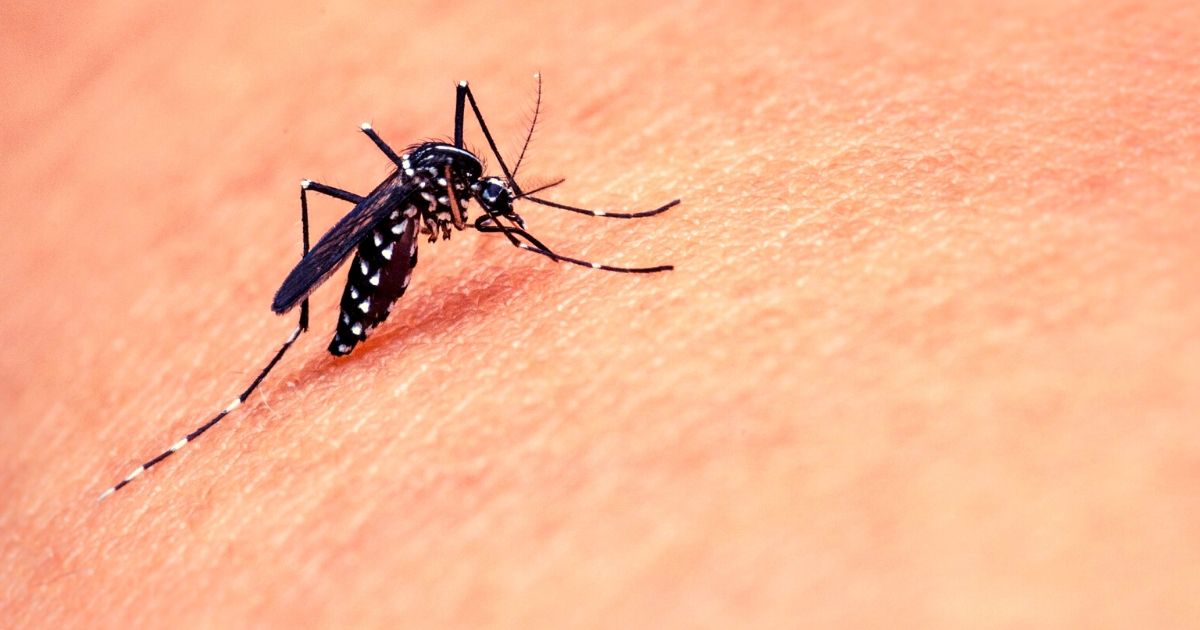
Table Of Contents
- Types of Mosquitoes in Singapore
- Signs of Mosquito Infestations
- Life Cycle and Biology
- Medical Importance
- Symptoms of Mosquito-Related Diseases
- Ways to Prevent Mosquito Bites
- How to Prevent Mosquito Breeding In and Around your Home
- DIY Methods to Prevent and Get Rid of Mosquitoes
- Professional Mosquito Treatment
Mosquitoes are tiny creatures. Without their wing’s buzzing sounds, we might not be aware of their presence. Nevertheless, they feed on humans and animals, leaving itchy, annoying bites on the flesh that can cause excessive irritation and infection. Mosquitoes cause annoyance with their uncanny ability to detect humans’ presence, taking blood and disappearing before a fatal swat.
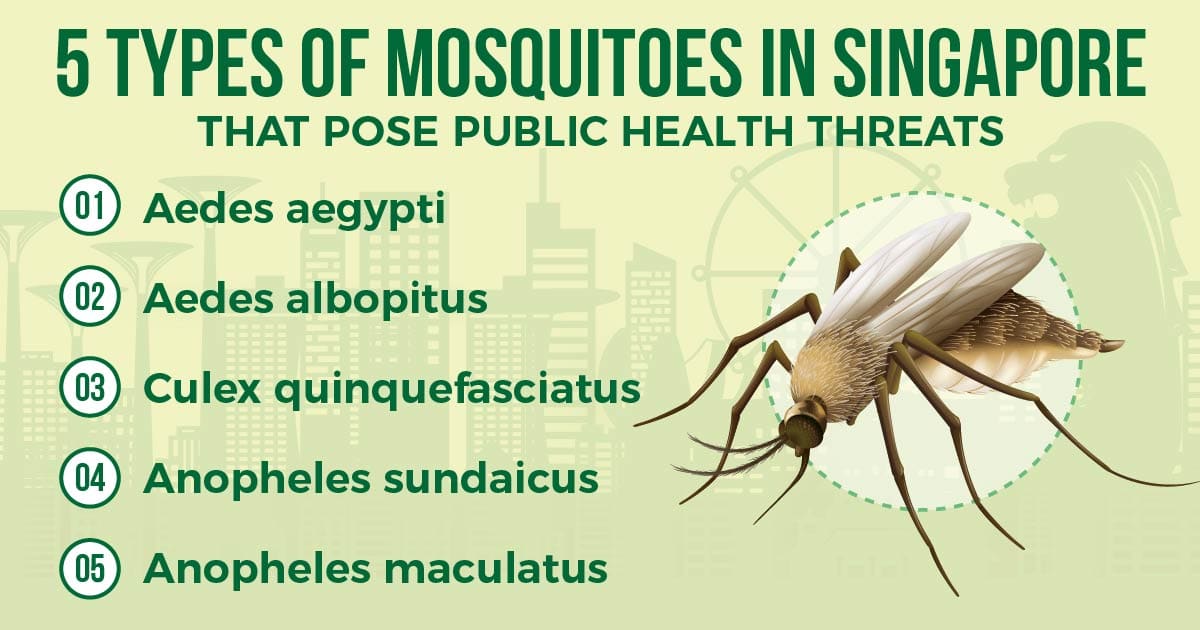
Types of Mosquitoes in Singapore
Numerous species of mosquitoes are active in Singapore. Some of the species are uncommon or seldom pose a threat to public health.
The primary mosquito species of concern in Singapore are:
- Aedes aegypti
- Aedes Albopitus
- Culex quinquefasciatus
- Anopheles sundaicus
- Anopheles Maculatus.
Aedes Mosquitoes
Aedes mosquitoes exist in urban and suburban areas. They are black with white stripes on their body and legs. They are the so-called container breeders that prefer to breed in stagnant water, including natural and artificial containers.
Aedes Aegypti
Aedes aegypti is an indoor species that tends to breed and rest in cool dark places.
Aedes Albopitus
Aedes albopitus mosquitoes prefer to breed outdoor, especially in areas with vegetation.
Culex and Anopheles mosquitoes
Culex and Anopheles mosquitoes are night biters. Most of them are brown. Culex mosquitoes tend to breed in polluted water while Anopheles mosquitoes breed in brackish water (depending on the species).
Signs of Mosquito Infestations
A mosquito infestation in premises is most easily detected through mosquito bites.
These bites leave itchy bumps on people’s skin.
Besides mosquito bites, you may also notice an irritating buzzing sound as mosquitoes fly near your head. It is common to spot flying adult mosquitoes around the infested premises. Their larvae and pupae may be found in water bodies such as vase and flowerpot plates.
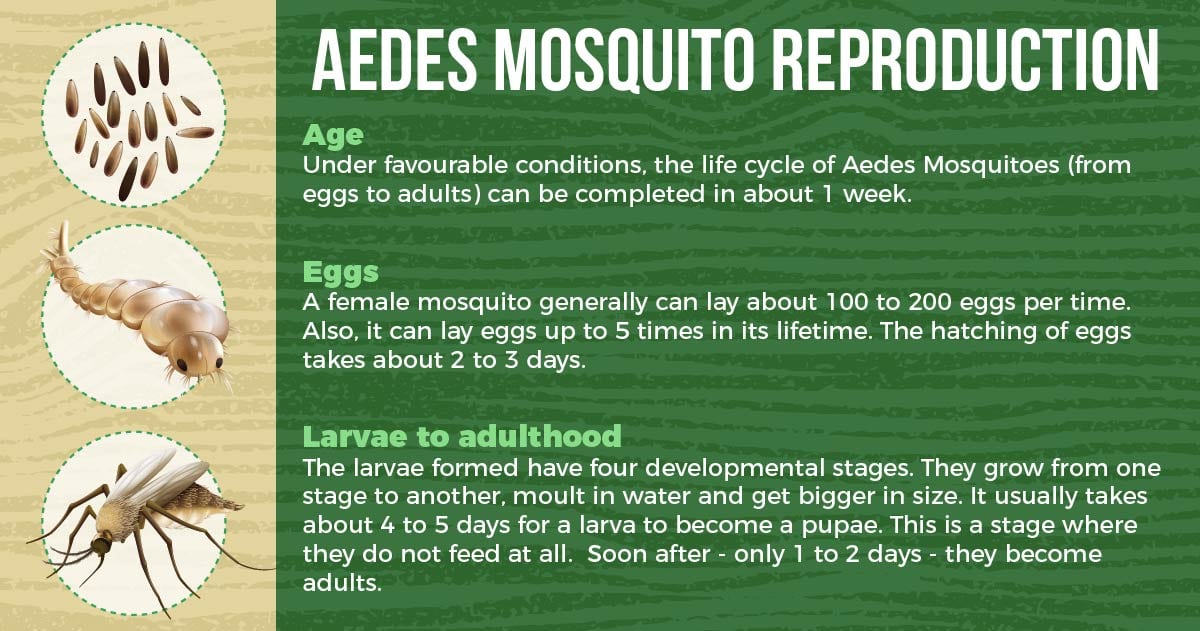
Life Cycle and Biology
The life cycle of Aedes Mosquitoes (from eggs to adults) takes around one week under favourable conditions. The tropical climate in Singapore provides mosquitoes with optimum temperature for their growth. Compared to other countries outside the tropical region, mosquitoes require less time to complete their life cycle in Singapore.
A female mosquito generally can lay about 100 to 200 eggs per time.
Also, it can lay eggs up to 5 times in its lifetime. Hence, a viable female mosquito produces a thousand eggs. One terrible fact about Aedes mosquitoes’ eggs is that they can resist dehydration for more than 6 months. In other words, the eggs can survive in a dry condition for up to 6 months or more and hatch once they are exposed to water.
The hatching of eggs takes about 2 to 3 days. The larvae formed have four developmental stages. They grow from one stage to another, moult in water and get bigger. It usually takes about 4 to 5 days for a larva to become a pupa.
As they grow to become pupae, this is a stage where they do not feed at all. They will usually rest at the water surface and wait for their emergence of becoming adult mosquitoes. This process only takes 1 to 2 days.
For adult mosquitoes, females will suck blood to provide nutrients for their eggs. However, male mosquitoes will only feed on nectar or plant juices. Both sexes prefer to stay in cool and dark places.
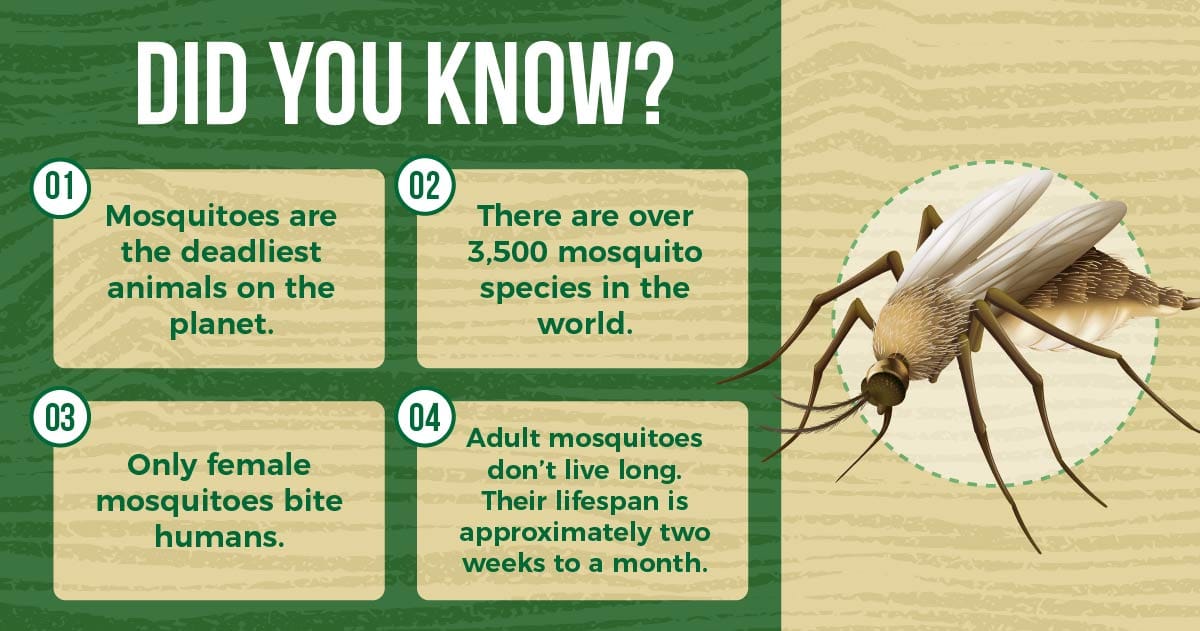
Medical Importance
Beyond the nuisance factors, mosquitoes are vectors of some deadly diseases, including Dengue Fever, Chikungunya, Zika Virus, Japanese Encephalitis, and Malaria. Among these diseases, Dengue Fever is one of the most severe vector-borne diseases affecting our community in Singapore.
Aedes aegypti and Aedes albopitus are the two main species of Aedes mosquito that can transmit Dengue fever in Singapore.
The most common mode of transmission starts when an Aedes mosquito bites a person infected with the Dengue virus. The virus then undergoes an extrinsic incubation period in the mosquito. It takes about 8-12 days before granting the mosquito the ability to transmit the virus for the rest of its life. The infectious mosquito then transmits the virus to humans via its bite. The intrinsic incubation period in humans can take up to 10 days. An infected human will then begin to show symptoms of the disease.
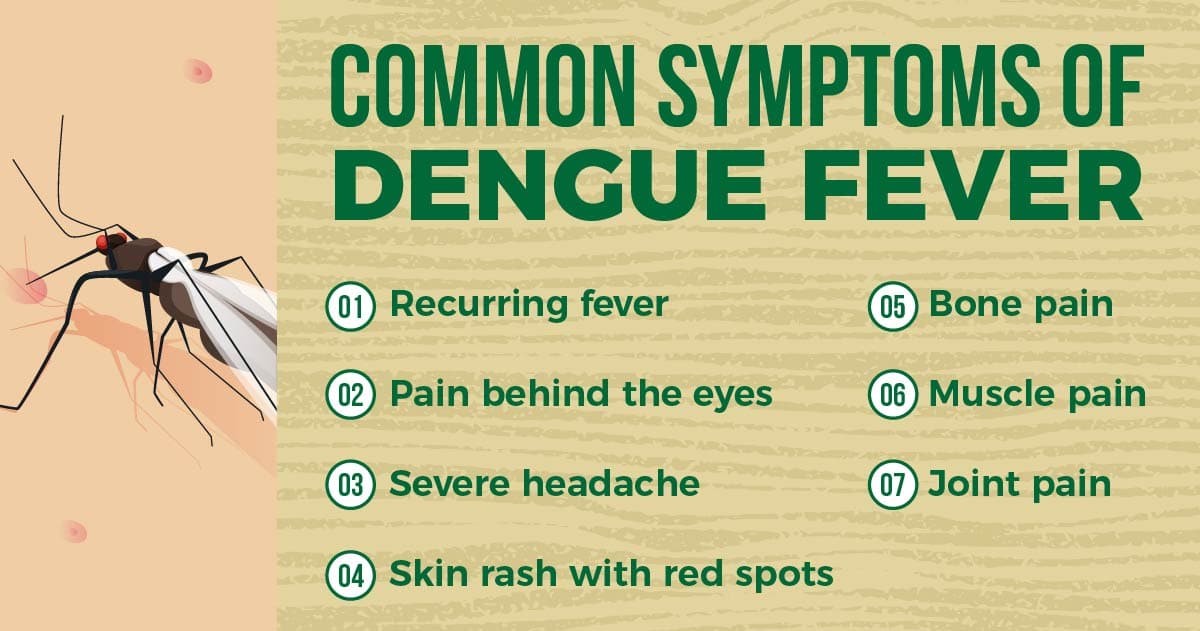
Symptoms of Mosquito-Related Diseases
If someone is infected with Dengue fever, they may only show few or no signs of the disease. This is called asymptomatic. Some people may experience symptoms a few days after being bitten by a mosquito carrying the virus.
The common symptoms of Dengue fever are:
- Recurring fever
- Pain behind the eyes
- Muscle pain
- Joint pain
- Bone pain
- Severe headache
- Skin rash with red spots
While the fever is usually not fatal, it can progress to Dengue Hemorrhagic Fever (DHF). Life-threatening complications may then occur.
The symptoms of DHF include:
- Severe abdominal pain
- Diarrhoea
- Vomiting
- Convulsions
- Bruising
- Uncontrolled bleeding
Finally, DHF can also lead to a high fever (lasting between 2 to 7 days) and Dengue Shock Syndrome.
Pro tip: If you're worried about a bite or sting, your symptoms do not start to improve within a few days or are getting worse, contact your doctor.
Ways to Prevent Mosquito Bites
Singapore’s hot and humid climate makes it a paradise for mosquitoes to breed. The threat of Dengue in Singapore is all year round. However, there are still no vaccines or drugs that can effectively treat or prevent dengue fever. Hence, reducing the risk of getting mosquito bites will lower the chances of having dengue fever. Several factors can affect the attraction of female mosquitoes towards a blood meal, namely carbon dioxide, body odour and the heat emitted by animals and humans. Here are some ways to prevent mosquito bites:
1. Use insect repellents
Apply insect repellent to bare skin when going outdoors. Repellents containing DEET (the common active ingredient in insect repellents) are the most widely available insect repellents in the world. A great deal of testing has been done on DEET insect repellents. They are proven to be safe to use.
2. Wear protective clothing
Vision is one thing mosquitoes use to search for their blood meal. Black or dark coloured clothes are proven to be more attractive than light coloured clothes for mosquitoes. However, mosquitoes can bite through clothing that is made of thin materials like tights. Hence, long-sleeved thick clothing is advisable as mosquitoes might find it difficult to bite through.
3. Avoid peak mosquito hours
To avoid mosquito bites, you might need to plan any outdoor activities when mosquitoes are less active. Although different species have different active hours, mosquitoes are generally more active during dawn and dusk.
4. Keep air circulating
Mosquitoes are weak fliers, which means they are not that efficient at flying and are not able to handle strong wind. Use of electric fans for outdoor activities and gatherings can prevent you and your family from mosquito bites. Mosquitoes usually fly at the lower half of our bodies and near the ground. Therefore, aim fans towards that area.
5. Sleep under a mosquito net
If you notice mosquito bites on your body after hours of sleeping, using a mosquito net would be a good idea.
6. Get rid of stagnant water
Any puddles of water around your home can become a potential breeding source for mosquitoes. Always be mindful to empty water from flowerpots, plates, pet food, WC pan collar, buckets, barrels and cans at least once or twice a week as mosquitoes’ life cycle can be completed within a week. Always cap the bamboo pole holders when not in use to prevent rainwater from splashing into the holders.
7. Keep your landscapes and home clean
Remember to keep the gully traps, scupper drains, and roof gutters clean. Thinning dense vegetation will help to improve air circulation. You can avoid getting mosquito bites by making your environment less desirable or appealing to them.
Want to find out more about mosquito control in Singapore?
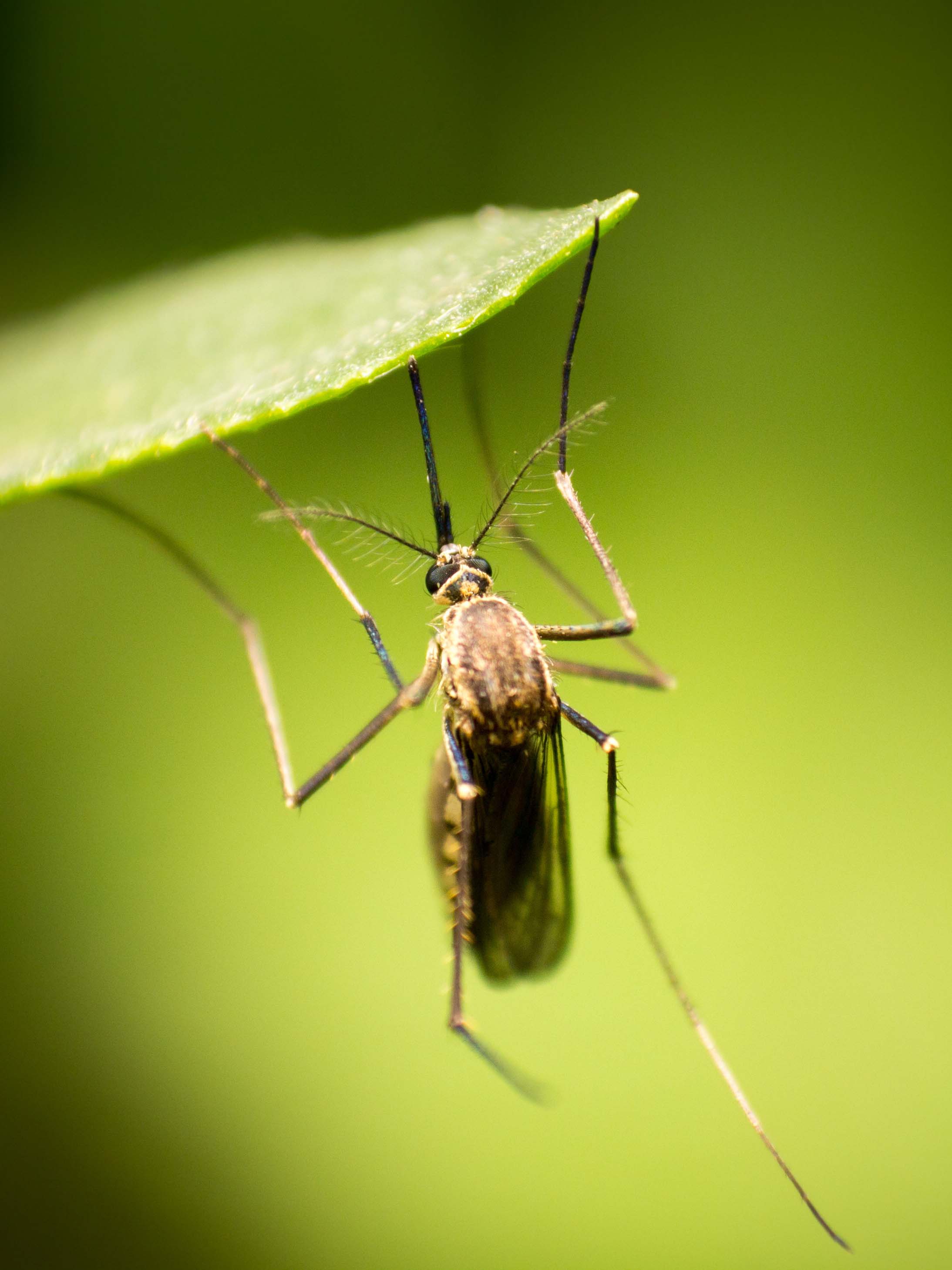
How to Prevent Mosquito Breeding In and Around your Home
Controlling and preventing mosquitoes in Singapore is a real challenge. As mentioned, the climate offers an ideal breeding ground for mosquitoes. However, public awareness, preventive methods, and collective efforts are crucial in the battle against Dengue in Singapore.
Aedes mosquitoes can breed in water bodies that are as small as the size of a 20 cents coin. Thus, all stagnant water must be eliminated to prevent mosquito breeding.
Practice the following 5-step Mozzie Wipeout recommended by the National Environment Agency:
- Turn any unused pails
- Regularly change the water in vases
- Flip flowerpot plates
- Loosen hardened soil in flowerpots or planter boxes
- Clear roof gutter and place biological control (Bti)
Other than the 5-step Mozzie Wipeout, we must also do a thorough check-up and prevention including:
- Cover rarely used gully traps/ install anti-mosquito valves
- Cover all containers storing water
- Clear water from dish rack trays
- Cover bamboo pole holders
- Keep drains free from obstructions such as dry leaves and tree branches
- Seal up tree holes in gardens using sand or cement to prevent the collection of stagnant water
- Seal up gaps around covers using a silicone-based caulk
- Remove unwanted receptacles to avoid the accumulation of rainwater
- Repair outside leaks
- Consider poking a tiny hole with a pin in leaf axils (between the leaves and the stem) for proper drainage as those areas are likely to collect water.
DIY Methods to Prevent and Get Rid of Mosquitoes
The use of essential oils to repel mosquitoes is not a new thing. The essential oils extracted from some plants such as lemongrass and peppermint contain chemical constituents that are proven to be effective mosquito repellents. If you cannot stand the smell and smoke of mosquito coils, you may consider using essential oils since they are derived from natural plants while also packed with other benefits to the human body.
One of the most effective ways of preventing mosquito bites is by keeping them out of your house.
You can do this by using insect screens. This method is simple, chemical-free yet effective since you can protect your home from the invasion of mosquitoes and other pests.
Professional Mosquito Treatment
Adoption of permanent measures is strongly advised to address and eliminate the root cause of mosquito breeding. The DIY methods are recommended if the level of mosquito activity is low, and if our only aim is to repel them. The common ways of reducing the number of adult mosquitoes and eliminating the breeding source are thermal fogging, misting and larviciding.
Thermal Fogging
Thermal fogging is widely used in Singapore. It is a method used to kill adult mosquitoes. The hand-carried fogger runs by heating mixed solution with gasoline from the combustion chamber. The insecticide will be pumped via a delivery valve and injected to the fog head or nozzle. From there, insecticide liquid will be vaporized into hot gas and released into the target places.
Thermal fogging provides a better penetration of aerosol insecticide, which the insecticide can reach target areas more effectively. However, the duration of its residual effect is short, which can only kill adult mosquitoes present during the treatment.
Misting
Misting is a motor-driven ULV unit that targets flying insects, especially mosquito species. This method sprays fine mist of insecticide into the air. The gasoline-driven engine is used to pressure and force the formulation from the insecticide container to produce the high-volume insecticide mists through the nozzles. Misting leaves behind insecticide droplets and creates residual chemical effect on the treated surface to kill adult mosquitoes upon contact. However, the droplets can be washed off by rainwater.

Pest Problem? Let Us Help.
We offer fast and effective precision treatments to eliminate pests while ensuring a safe environment for your home or business.
Larviciding
Larviciding is used to eliminate the larvae found in a water body, and to prevent the breeding of mosquito larvae before it takes place. Some of the most common larvicides used are larvicidal oils, chemical insecticides and biological larvicide such as Bacillus thuringiensis israelensis (Bti).
Larvicidal oils have a physical mode of action whereby they act as surfactants that prevent mosquito larvae and pupae from rising to the water surface for respiration, causing them to drown. Chemical larvicides usually kill larvae and pupae by affecting their nervous system. Bti is a microbe that will be ingested by the larvae, and their toxins will be activated in the larvae’s midgut, paralyzing and damaging their digestive systems, thus killing them.
Vehicle Mounted Fogging & Misting
Killem Pest is one of the few pest control companies in Singapore that uses the vehicle-mounted fogger and mister. The fogger is a large version of the common hand-carried fogger and has a higher performance because of its faster application rate.
On the other hand, the vehicle-mounted mister provides a better application compared to the normal hand-carried mister. The adjustable aerosol nozzles allow a better variation of misting direction and ensure wider distribution of insecticides towards the treated areas.
Controlling the population of mosquitoes in Singapore is not an easy challenge, but we are certainly taking it on. Early detection facilitates the prevention of their breeding and management of their population. With more research and knowledge about the insects, we will be able to keep their populations under control.
Frequently Asked Questions
Since some mosquitoes can carry viruses, their bites might be dangerous to people. Infected mosquitoes can transmit the West Nile virus, yellow fever, malaria, Dengue, Zika Virus, and other diseases.
You might feel a stinging sensation and itching after the bite, but overall most people have a mild reaction to mosquito bites. However, sometimes mosquito bites can cause swelling, soreness, and redness.
Yes, mosquitoes can bite through clothes. They have long, sharp mouthparts that can easily go through thin and loose fabrics.
The Ultimate Guide to Termite Pest Prevention, Treatment and Control in Singapore
Pest Guides
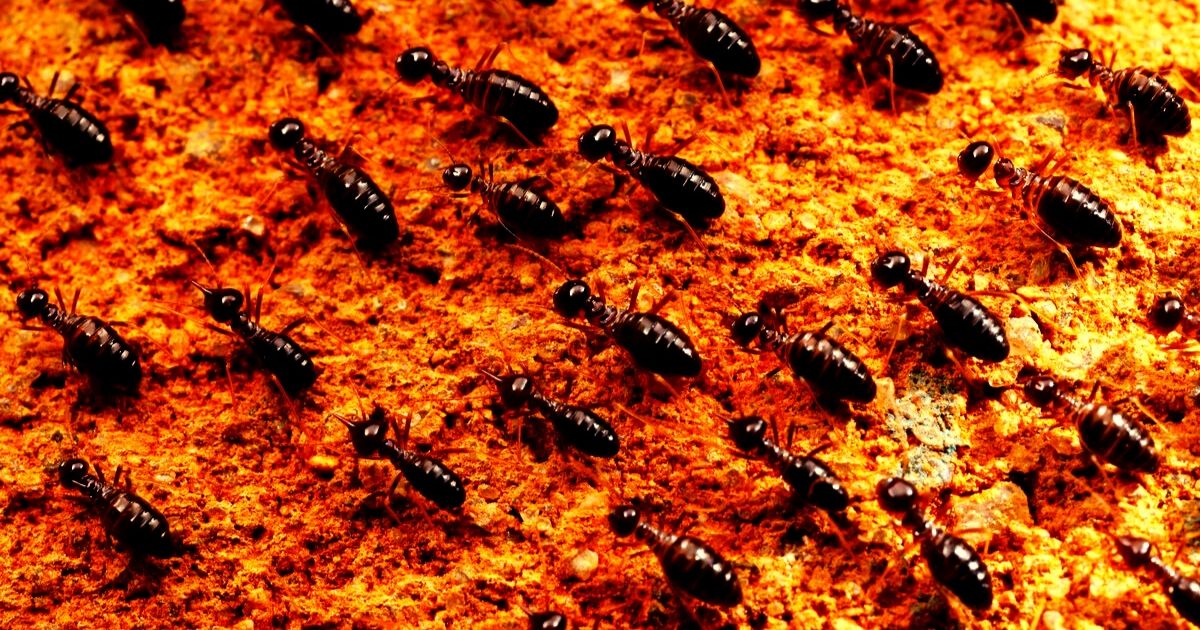
Termites are tiny insects that are well-known to the public for their ability to feed on and damage timber. Many homeowners or individuals who have experience dealing with termites, can probably relate a termite infestation to one of their worst nightmares if not handled properly.
“If you know the enemy and know yourself, you need not fear the result of a hundred battles.”
This is a famous quote from the great military strategist Sun Tzu. It is advised for us to understand more about an opponent or a problem we are facing. The goal is to come out with effective ways or solutions to conquer the problem. In this case, by knowing more about termites, we should be able to manage a termite infestation.
Table Of Contents
- Types of Termites in Singapore
- Life Cycle and Biology
- Signs of Termite Infestations
- Damage
- The Best Ways to Get Rid of Termites – What You Can Do
- What to Do When You Spot Them
- DIY Termite Treatments That Cost Less Than 10$
- The Best Ways to Get Rid of Termites
- Professional Termite Treatment: Baiting
- Professional Termite Treatment: Soil Treatment
- Professional Termite Treatment: Dusting
- Different Treatment Methods for Termite Pest Prevention
Types of Termites in Singapore
There are more than 3000 living and fossil species of termites around the world. Termites are classified into three main groups: Subterranean termites, dry wood termites, and damp wood termites.
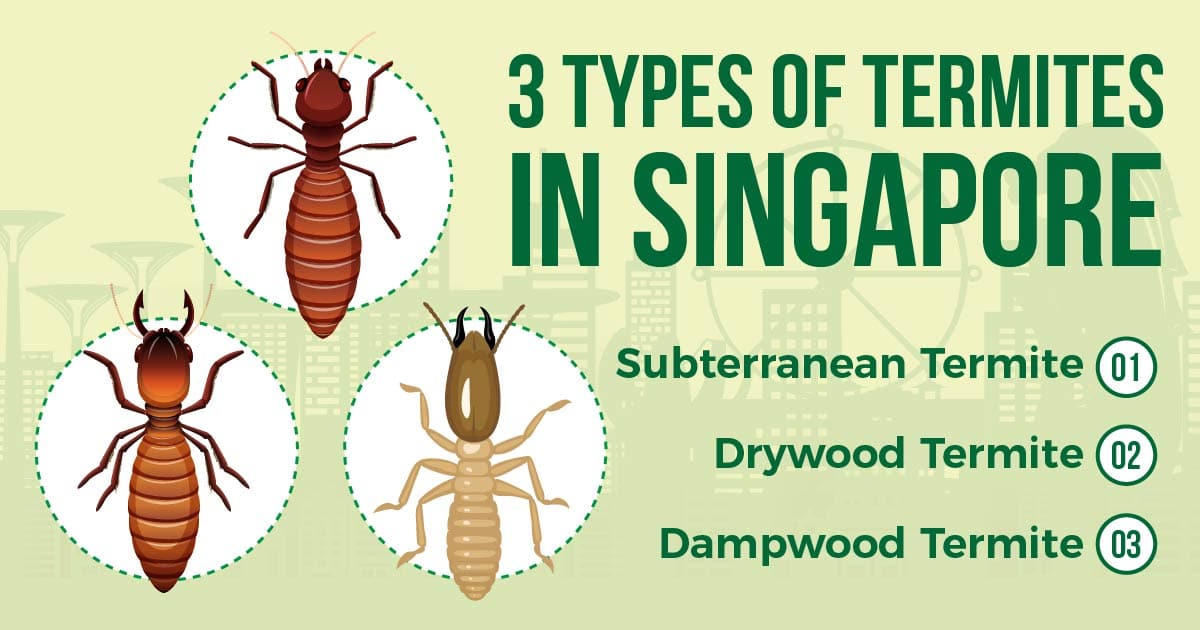
All three groups of termites live in Singapore. Subterranean termites and drywood termites are the ones of most significant concern to humans. In contrast, the damp wood termite plays a vital role in the ecosystem as a decomposer, especially in forested areas.
Subterranean Termites
As their name implies, most subterranean termites live underground. They look for areas free of human disturbances. Subterranean termites rely greatly on moisture in the soil. They have an excellent ability to build mud tubes to travel above ground. Mud tubes are tunnels made of soil, cellulose and other particulate matter. This helps termites prevent water loss as they travel above ground.
Drywood Termites
Drywood termites are not dependent on the moisture in the soil, so they live inside wood. They house themselves in structures made of dry wood such as doors, walls, furniture shelves and cabinets.
Dampwood Termites
Dampwood termites infest wood materials with high moisture content. They often live in decaying logs in the forest. Dampwood termites require a constant supply of water sources. For that reason, the termites usually house themselves in forested areas with fallen trees and decaying timbers.
What Causes Termites?
- Presence of wood
- Moist environment
- Poor maintenance
Want to find out more about termites treatment in Singapore?
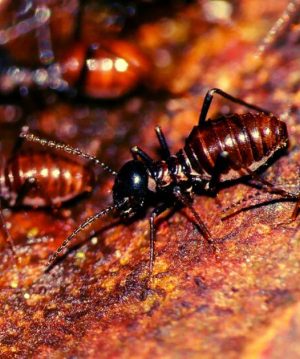
Life Cycle and Biology
One of the most fascinating behaviors in the world of insects is eusociality. Termites are eusocial insects that live in multigenerational families, practice cooperative brood care and division of labor.
In a termite colony, individuals are divided into three castes: reproductives, workers and soldiers.
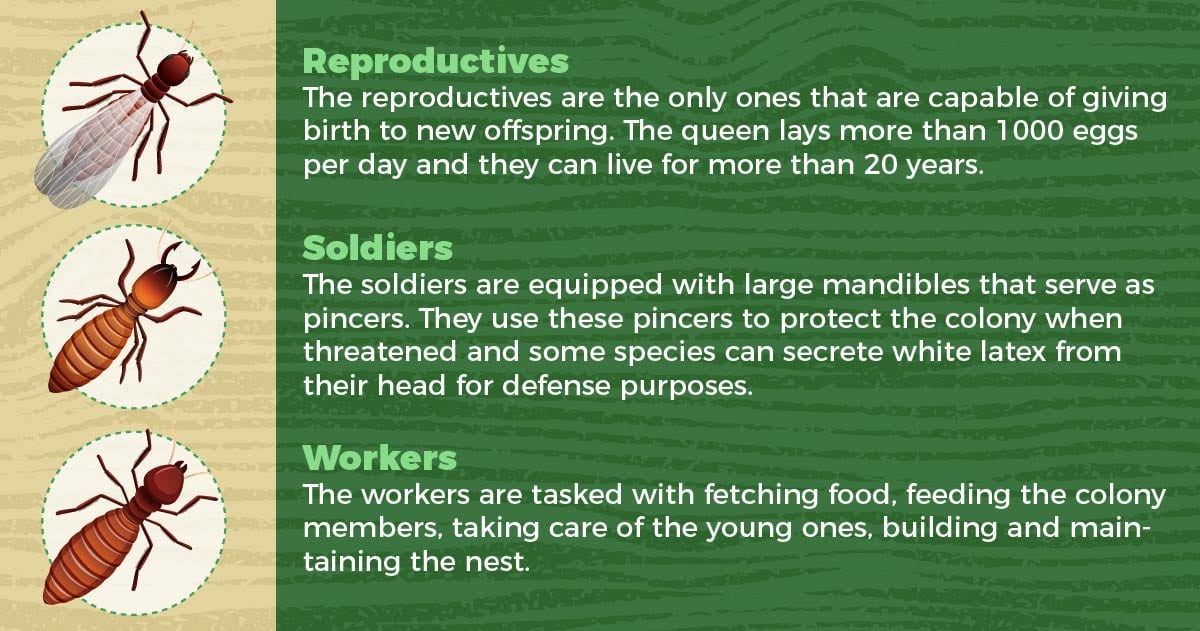
Reproductives
In a termite colony, the reproductives are the only ones capable of giving birth to new offsprings. The winged termites that are often seen swarming around light sources are reproductive termites. They are called alates or swarmers. Winged termites leave their nests to form a new colony. They find their mates through swarming and search for suitable nesting sites upon successful pairing. These termites form the king and queen of the new nest.
The queen lays more than 1000 eggs per day and they can live for more than 20 years.
A termite colony may continue to survive after the death of the king and queen. There are secondary reproductives that can take over their duty.
Soldiers
The soldiers have large mandibles that serve as pincers. They use these pincers to protect the colony when threatened and some species can secrete white latex from their head for defense purposes. The large mandibles hinder the ability of the soldiers to feed. There, they have to rely on the workers for feeding.
Workers
The workers fetch food and feed the colony members. They take care of the young ones by building and maintaining the nest. Workers are the ones responsible for the damages done. In some colonies, the workers also consist of the immatures. These can further develop into reproductives or soldiers when necessary.
Signs of Termite Infestations
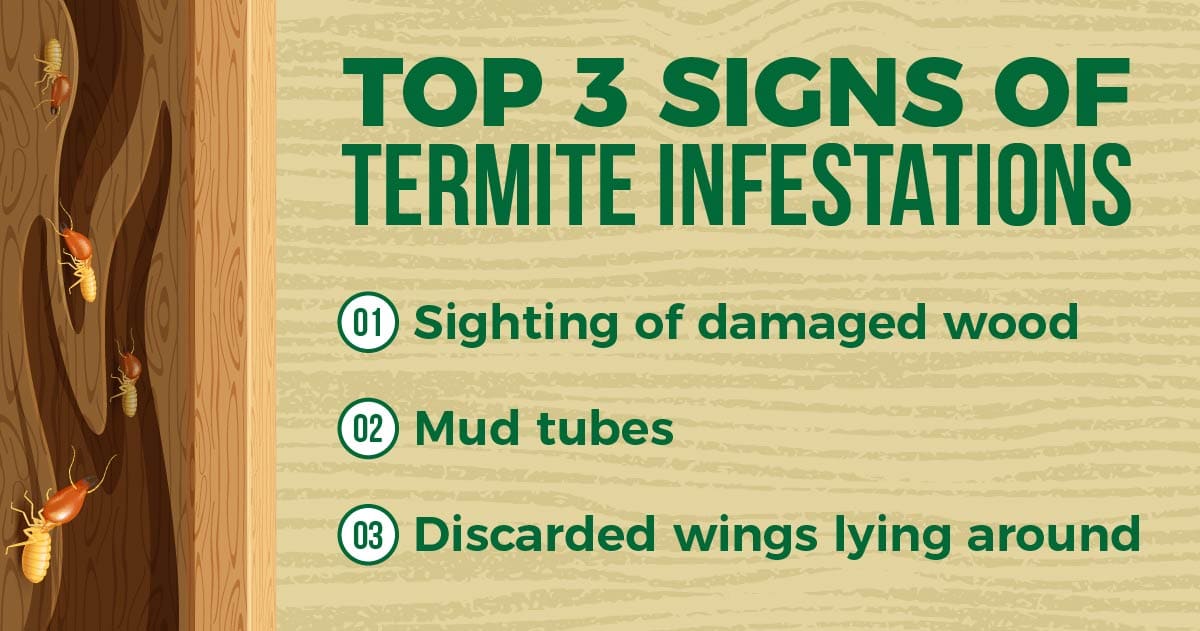
One of the most obvious signs of termite infestations is the sighting of damaged wood. Termites usually feed underneath the surface of wood. Their damages cause the surface to appear bubbly. Damages caused by subterranean termites sometimes resemble water damage.
The mud tubes constructed by subterranean termites for traveling above ground serve as another distinct sign of a termite infestation.
A large number of mud tubes are commonly found in areas with heavy infestations.
Termites feed on the interior of wooden structures. This empties the structures and gives off hollow sounds when they hit their heads.
Termites can communicate by sound. Termite soldiers hit their heads against the tunnels to alert the other colony members when disturbed. When this happens, a tapping sound often comes from the infested wood.
Flying termites are a nuisance. The wings they shed is unsightly especially when in large numbers. The presence of a large number of flying termites and discarded wings might indicate the presence of a termite colony nearby.
Drywood termite infestations are detected through the presence of their fecal pellets that resemble wood dust. The fecal pellets are found near infested wooden structures. These pellets push through exit holes that are visible on the surface of the infested wood.
Last but not least, a termite infestation can be confirmed when live termites are spotted. Although it is not common, termites can be detected when their mud tubes or infested wood are accidentally disturbed.
Damage
Termites can cause severe damage. The colony size of a subterranean termite can easily reach 1-2 million in total. It would only take less than 6 months for them to finish a 2×4 wooden beam.
Structural Damage
The most significant damage caused by termites is on buildings and structures.
They feed on cellulose materials in wood. By hollowing it out, they cause wooden structures to weaken and become frail. They weaken the wooden structures like beams, pillars and ceiling. In turn, this eventually leads to the collapse of the structures.
Safety Concerns
Timbers were the primary materials used in the construction of older buildings. Some of the wooden structures are preserved for modern use. Termites can hollow out roof truss, beams and pillars. This causes the roof or the entire building to collapse when they can no longer sustain the structures’ weight.
Aesthetic Damage
Besides causing structural damages, termites can also affect the aesthetics of a building. Chipping paint, uneven surfaces, grooves on wood and mud tubes are some sights that one might notice in an infested home.
Fire Hazard
Subterranean termites are known to infest the electrical components such as circuit boxes and wire trunkings, which are rarely accessed by humans. They may damage the electrical elements, causing short circuit and even fire.
Health Concerns
Termites are not of medical importance as they do not transmit diseases to humans. However, due to the moist and humid environment in which they reside, they are usually accompanied by mold and fungi. The spores released by the molds and fungi may have adverse effects on people with allergies or asthma.
Damage and Repair Costs
When termites severely infest an object or structure, money is needed to repair or replace them. More often than not, termite infestations require homeowners to repair or replace more than one item. For example, termites infesting the wooden parquets and skirting require the replacement of both items.
Pro Tip: DIY treatment is ineffective unless it can target the underground colony or the nest.
The Best Ways to Get Rid of Termites – What You Can Do
Pest management professionals in Singapore may carry out inspections during their visits to your house. You can rely on them to keep tabs on termite activities. However, if you do not have a contract with one, you will have to get rid of termites yourself.
Where to Spot Them
1. Flooring and skirting
Damaged or raised portions of wooden flooring and skirting are indications of termite infestations. Mud tubes are visible on corners and edges where the wall and floor meet.
2. Storerooms
Termites are spotted in storerooms, especially if human movements are infrequent or if there are hidden corners that are hard to access.
3. Pipes
Areas around pipes usually have higher humidity, which termites prefer. Moisture content can also be high if there is leakage. This makes the area around pipes a hotspot for termite infestations.
4. Exterior wall
Mud tubes can be seen on exterior walls as termites make their way into your house.
5. Outdoor area
Termites can hide among the unused building materials piled outside of your home. The tree stumps in your garden can be infested with termites if not removed quickly.
6. Wooden door and window frames
Wooden door frames are present in most homes and they can become infested with termites. Look for signs such as mud tubes or exit holes and faecal pellets when you clean your windows and doors for early detection of termites.
What to Do When You Spot Them
If you come across any sign of a termite infestation, it is important to remember that termites are unlikely to cause any devastating damage overnight. Therefore, do not panic and do not use conventional insecticide aerosols to spray the affected area! You may snap a photo of the affected area so that your pest management service provider can identify the type of termite infestation you are facing. It is important to not disturb the affected area.
Some homeowners may try to clear any mud tube or infested wood. It is not advisable to do so unless recommended by the pest management professionals.
This is because it may make the control of termites more difficult when a colony is disturbed. Contact a local pest management professional in Singapore so that they can provide you with useful advice and control measures.
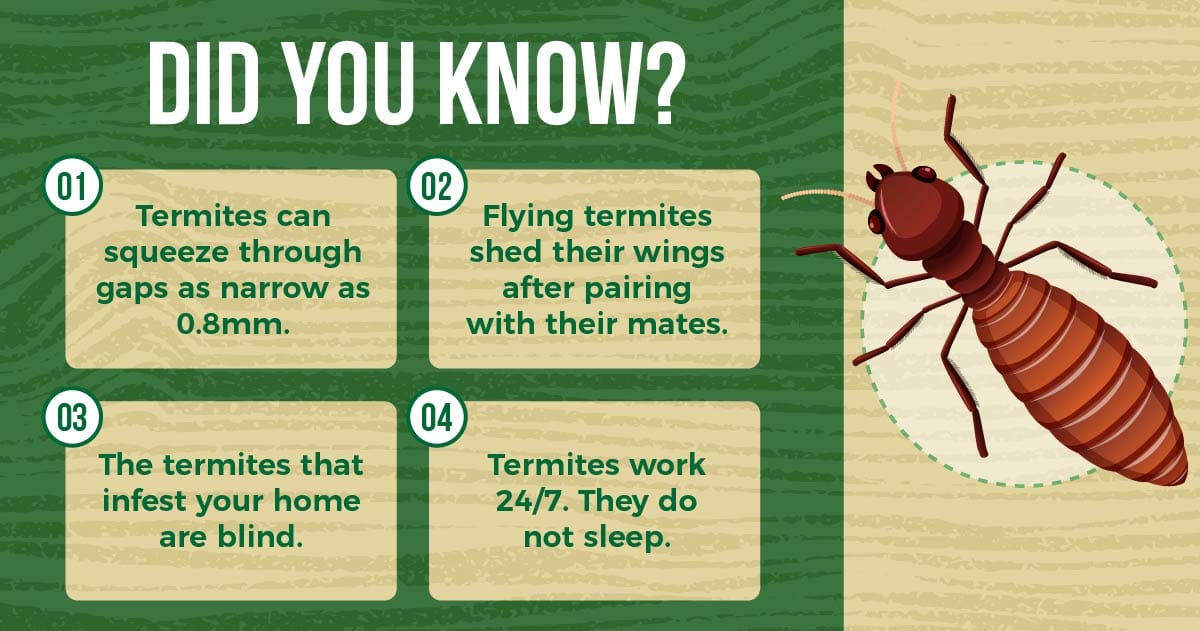
DIY Termite Treatments That Cost Less Than 10$
While the execution of termite treatments generally requires professional knowledge and training, there is something you can do to get rid of the annoying flying termites. All you need is soapy water and a light source.
Like many other insects, flying termites get drawn to light sources, so when water is placed under a light source, termites can get confused and are drawn to the reflection of light in the water, causing them to drown in the water.
The Best Ways to Get Rid of Termites
As mentioned earlier, subterranean termite colonies live underground. Only a small portion of the colony members move above the ground. Therefore, treatment is ineffective unless it can target the underground colony or the nest. This is why we do not recommend homeowners to carry out any procedure on their own.
Professional Termite Treatment: Baiting
To target the underground colony, baiting treatment is the most suitable method. The bait used by pest management professionals is specifically designed only to target subterranean termites. The bait consists of cellulosic material impregnated with an insect growth regulator. The cellulosic material serves as a food attractant while the insect growth regulator acts as a slow-acting toxicant.
After the termite workers consume the bait, other termite colony members receive the toxicant. Baiting treatment usually takes 1 to 2 months to suppress a whole termite colony. It might seem like a long treatment period, but it is the best method to prevent re-infestation from the same termite colony.
Professional Termite Treatment: Soil Treatment
However, baiting is not a panacea. Some other subterranean termite species are less likely to be affected by baiting. They are the fungus-growing higher termites that have alternative food storing in the fungus comb besides having wood as the primary source. The transfer of toxicants will be slowed down, especially if the target colony size is big. In this case, soil treatment replaces baiting.
Soil treatment is an approach that applies Green-label certified liquid termiticides to create a chemical barrier in the soil under or around the foundation of a building. The termiticides can prevent the invasion of subterranean termites for years.
Professional Termite Treatment: Dusting
Also, one of the most conventional methods of managing termites is dusting. This method is the least expensive treatment. It is used to puff insecticidal dust into the mud tube of termites. The foraging termites, which have been puffed by the dust, are expected to pass the toxicant to their nestmates by social interaction.
The success of dusting depends on the skill and technique of the pest management professional. If too much dust puffs into the mud tube, the treated termites will die before they pass on the toxicant.

Pest Problem? Let Us Help.
We offer fast and effective precision treatments to eliminate pests while ensuring a safe environment for your home or business.
Different Treatment Methods for Termite Pest Prevention
The treatment methods for drywood termites are different from the treatments used to control subterranean termites. As previously mentioned, they have different biology and behaviour.
Drywood termites do not need soil and moisture to build their colony. Infested wood with drywood termites transported everywhere. Since the whole colony of drywood termites can live within a piece of timber structure, we should inspect and treat the wood before we use or move the wood into our home.
Wood can be pre-treated with chemicals to stop termites from digesting inside the wood. Then, varnishing the wood or applying a fresh coat of paint helps prevent the attack of drywood termites in the future.
It is often too late to perform any prevention once you have noticed the presence of fecal pellets. There are several ways to treat drywood termites, but the most common method is a wood replacement. The reason behind this is to remove the entire termite colony in the infested timber.
Some pest management professionals may provide fumigation for drywood termites treatment, while others may offer the foaming method if there is only a mild infestation. However, the success of treatments for drywood termites is often unpredictable. Therefore, prevention is better than cure.
In general, cooperation between you and your pest management professional is the major key to the success of termite treatment. If you would like more information on how Killem Pest can help you from termite infestation, get in touch or call us now!
Frequently Asked Questions
Termites very rarely bite humans, and as these bites are not toxic they don’t pose health risks.
Termites don’t transmit diseases harmful to humans, however, some people can suffer from allergic reactions and asthma attacks when living in infested homes.


